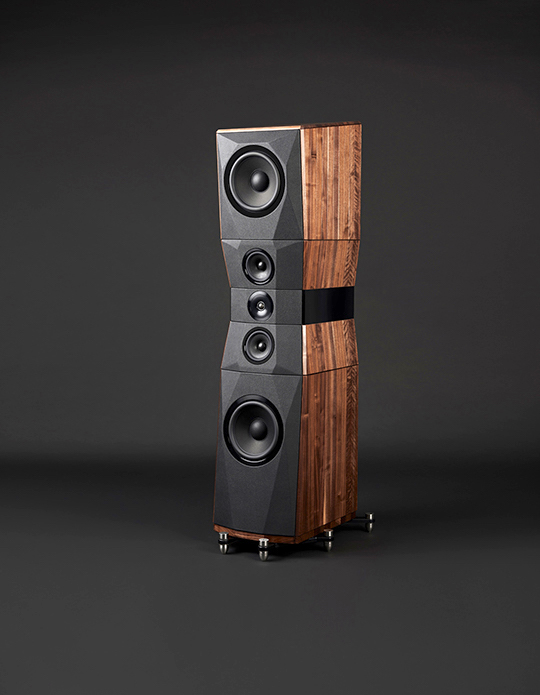That sense of togetherness is both the Dragon Legacy’s greatest strength and its defining characteristic. Play the Michelle Shocked album Short Sharp Shocked (Mercury 834 924-2) and there’s a natural sense of body, presence, rhythmic and dynamic integrity, a natural scale and perspective to the vocals. The accompaniments/arrangement are tight and committed, with a joyous bounce to tracks like ‘V.F.D.’ or ‘Anchorage’, gentle reflection on ‘Memories Of East Texas’ and stark social realism on ‘The L&N Don’t Stop Here Anymore’. There’s attack and shape to the guitars, bass and mandolin, space and a connection between the instruments within the tracks. The lazy, chunky bass-line on ‘If Love Was A Train’ is neither sluggish nor plodding. Instead it is measured, perfectly pitched and paced. This is slow-time – not slow. The performers set the pace and emotional pitch of the performance, the Peaks deliver it intact and on point.
 Listening to the Dragon Legacy, what you don’t get is the reach out and touch (you) immediacy and transparency, the sort that comes from a horn like the Trio G3 or a conventional but significantly more sensitive speaker system, like the U2. Like the high-frequency extension, you can buy that – at a price, be that financial or musical. But if we confine ourselves to our direct comparison with the size and cost equivalent Stenheim speaker, the trade-offs are instructive. Even with its massive X-base attached (an addition that moves it well the wrong side of €200,000) the U2 can’t match the coherence, stability, three-dimensionality and contiguous spatial quality of the Peak Consult speaker – which might be a good time to mention that the term ‘stereo’ derives from the Greek word for solid!
Listening to the Dragon Legacy, what you don’t get is the reach out and touch (you) immediacy and transparency, the sort that comes from a horn like the Trio G3 or a conventional but significantly more sensitive speaker system, like the U2. Like the high-frequency extension, you can buy that – at a price, be that financial or musical. But if we confine ourselves to our direct comparison with the size and cost equivalent Stenheim speaker, the trade-offs are instructive. Even with its massive X-base attached (an addition that moves it well the wrong side of €200,000) the U2 can’t match the coherence, stability, three-dimensionality and contiguous spatial quality of the Peak Consult speaker – which might be a good time to mention that the term ‘stereo’ derives from the Greek word for solid!
It’s all there in the mix…
As a listener who values that immediacy and the speakers that deliver it, do I miss it in the Dragon Legacy’s? In truth, no, because the swings more than make up for the roundabouts. The presence and connected energy generated by the Peaks does an equally impressive if less explicit job of revealing and defining the patterns and gradations that make up the music. It’s a classic example of the dangers of getting hung up on a single attribute. Let’s look at a couple of examples where that ‘immediacy’ should come into its own, like the lush textures and sumptuous, repetitive layers of Abel Korzeniowski’s soundtrack for Nocturnal Animals (Silva Screen Records SILLP 1525). Those string harmonics should be a perfect playground for the vivid sense of bowing and vibrant energy that comes with greater immediacy. Yet listening with the Peaks, both qualities are present as part of a greater whole, a whole that spreads the sound and individual instruments. Rather than the separate, you get the impression of the combined, adding further to the hauntingly atmospheric affect of the music.
Back to plucked strings and, if the guitars, banjo and mandolin on Short Sharp Shocked aren’t enough, how about taking the Mandolin into a bigger and more demanding context, where its identity and individuality face an even greater challenge. Carl Davis is a renowned composer of film and TV scores, including the title track and incidental music for the seminal, independent documentary series, The World At War. He later produced a longer, concert version of the music written for the series (Carl’s War, Carl Davis Collection CDC 009), developed and elaborated, culminating with the main theme, this time sketched out on Mandolin against a dense orchestral backing. Far from submerging the diminutive instrument, the bold, sweeping strings, woodwinds and minor key offer the dark background and tonal contrast to fix the fragile hope embodied in that delicately etched and deeply poignant theme, with all its historical associations and related tragedy. Once again, the power of the whole trumps the impact of the individual.
Whole new you…
Simply because it resists sub-division and separation of the performance, the Dragon Legacy invites us to look at understanding it in a different way. Rather than a laundry list of distinct and separate sonic attributes, it invites us (rather like a live concert) to examine the music as a whole. Instead of categories such as dynamic range, resolution, bass or treble quality, transparency and neutrality, the Peak Consult’s presentation begs different questions: who, how, why, what and where? Interrogate it (and its competition) on the basis of those questions and you’ll start to understand what this speaker does and why that makes it so different.

